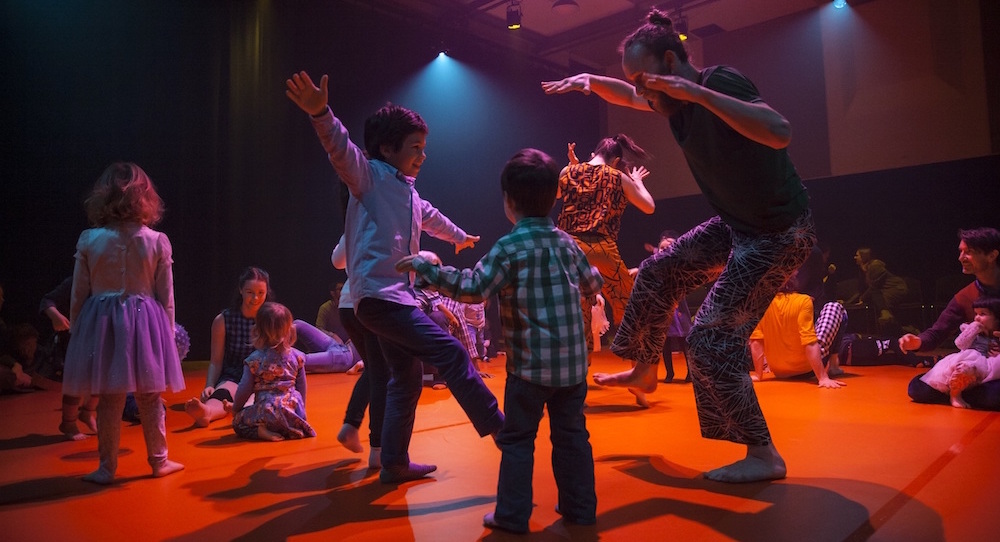Arts Centre Melbourne, Melbourne.
29 September 2017.
It’s an interesting thing to write a review of a show intended for children. The signs and structure of the piece can be read in terms of contemporary performance, but the ultimate review comes from the audience of children.

Nat Cursio’s ‘Loop’. Photo courtesy of Arts Centre Melbourne.
Created by Nat Cursio, with costumes channelling summer picnics by Sarah Hall, and crisp and sparse lighting by Jen Hector, Loop was created and presented at the Arts Centre Melbourne. In a residency at the Arts Centre, Cursio extracted movements from workshops with children and transcribed them on to the bodies of professional performers. Translating the freedom of unselfconsciousness on to the virtuosic highly-trained body doesn’t always work. The desire of the highly-trained body is to refine, to be precise with the grammar of the movement, and sometimes the technique of the dancer shows through rather than the embodied sentience of the child. Nevertheless, it’s a fascinating, if impossible, task.
Loop centres itself around a red tarkett dot, the primary visual design. The audience of adults and children gather around it. The symbol of the circle and the audience seated in the round is rich territory for Cursio; her work Blizzard explores this motif and structure.

Nat Cursio’s ‘Loop’. Photo courtesy of Arts Centre Melbourne.
Four dancers are lounging in the centre of the space. Through voice overs, a child announces the titles for the parts of the dance work. These titles are excessive and playful. In Part One, the voiceover signals that the dancers will shape shift and try to use their training, ironically, to forget their training. The moves of the children are inhabited by the dancers in a score created by Cursio with a choreographic precision and refined spatial attention.
In Part Two of Loop, the voiceover signals that the dancers will dance with “orbs”, and the dancers receive coloured balls from outside the circle; again, the image of the ball is playing with the metaphor of the circle and looping. The balls are manipulated, thrown, used as prop, and support, tricked with, and invite games with obscure rules to develop.

Performance of ‘Loop’. Photo courtesy of Arts Centre Melbourne.
In Part Three, the voiceover invites the children on to the red dot. This is seamless from invitation to participation. Almost all of the children unquestioningly take up the invitation. They are unwittingly becoming performers as the adult audiences watch the improvised play. At the end of this, the audience applaud, and the children find themselves being applauded for their spontaneous movement and play.
All of the performers, but particularly notably Alice Dixon, have a beautiful presence in this work, easily and effortlessly channelling their five-year-old self. Loop is a beautifully wrought performance piece, at least as interesting for adults as for children, and as interesting for its form, as for its choreography. Cursio has succeeded in making abstract contemporary dance accessible for children, and simultaneously for their accompanying adults. Kudos to Arts Centre Melbourne for programming it.
You’ve missed this outcome of Loop, but watch out for further iterations, and for more of Cursio’s work.
By Tamara Searle of Dance Informa.

















